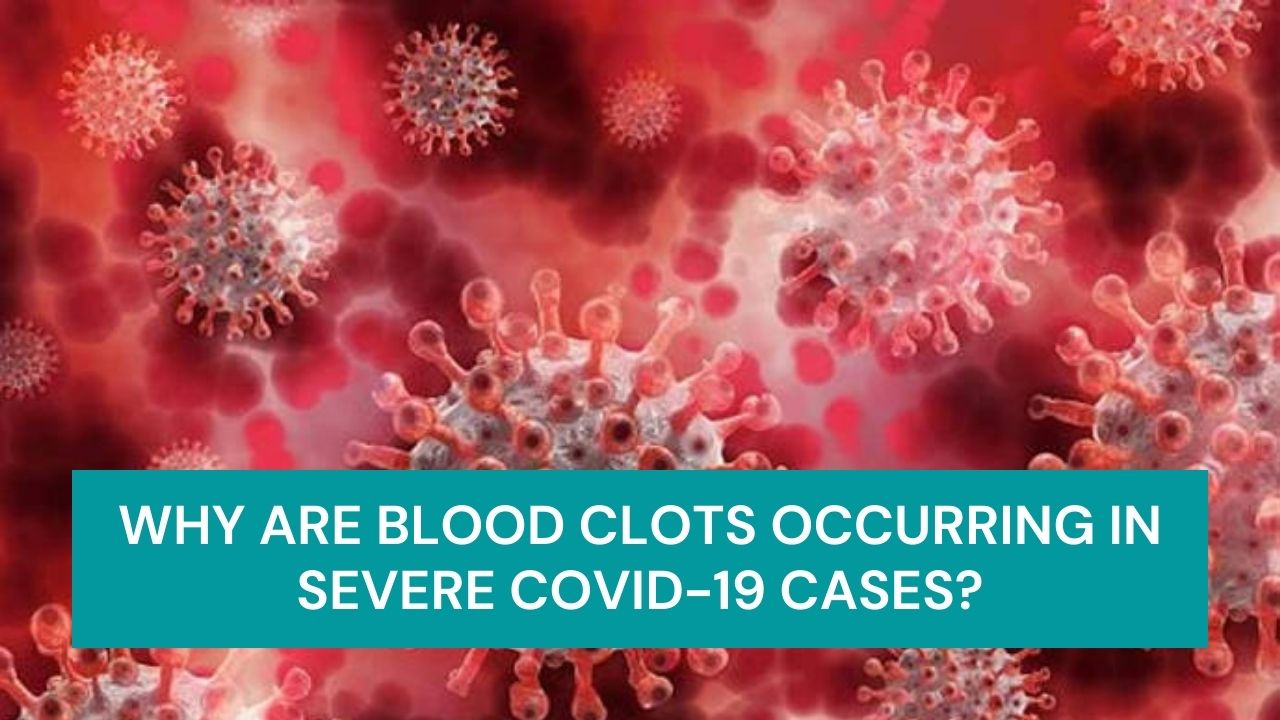Medical experts and scientists have been understanding coronavirus disease for over a year now. When the COVID outbreak first hit China and the global west, it was thought that it was a typical viral fever. However, a series of autopsies on COVID patients revealed that it was not a typical ARDS, in addition to that they found clots in the microcirculation. So, it has been understood so far that COVID is as much a disease of the blood vessels as it’s a disease of the lungs. According to a University of Oxford study which was published in April, the risk of rare blood clotting known as cerebral venous thrombosis (CVT) is more common after COVID-19. Out 30% of these cases occurring in the under the 30s. The formation of COVID-19 blood clots is a challenging situation for the medical fraternity. Blood clotting is a well-known mechanism for the protection of external cellular or tissue injury. The real concern is the unusual thrombotic presentations in COVID-19 patients. COVID-19 is caused by a highly infectious, severe acute respiratory syndrome (SARS-CoV-2). The understanding of this novel virus and disease involves sequentially in the past several months.
The prevalence of blood clotting in COVID-19 is high in patients who have other health conditions such as type-2 diabetes mellitus. While DVT is a serious condition that occurs when a blood clot forms in a deep located vein inside the body and arterial thrombosis is a clot that develops in the artery. Arteries are the blood vessels that carry oxygen-rich blood away from the heart to the body and veins carry deoxygenated or low oxygen blood from the body back to the heart.
Usually, COVID-19 is presented with fever, sore throat, shortness of breath, and dry cough as common clinical manifestations but the asymptomatic cases are also being reported which are more difficult to diagnose. Surprisingly, autopsies of COVID-19 patients have revealed clots in the small vessels of the lungs, heart, liver, and kidney which are responsible for heart attacks and strokes. Many patients of critical COVID-19 are reported with critically high levels of blood clotting or elevated levels of D-dimer. The formation of these mysterious clots causes coagulation abnormalities and thrombosis which is a real concern in COVID-19 patients and needs to be addressed.
The cause of the formation of blood clots in the vessels is retrieved from the classical concept of blood clotting. In the case of internal blood vessel injury, it leads to the formation of blood clots, causing thrombosis and vascular blockades, leading to severe and fatal outcomes.
This concept is substantiated by the following three facts:
- Direct injury to the endothelial cell by SARS-CoV-2 infection results in vascular damage.
- Indirect damage to the immune-mediated cytokine release syndrome results in inflammation and cell death.
- Recognition of ACE2 receptor-expressing endothelial cells of the blood vessels by the spike protein of SARS-CoV-2.
In order to protect the direct or indirect damage caused by SARS-CoV-2 to endothelial cells which lines the blood vessels, there is an activation of the host innate defensive mechanism which results in recruiting of the activated platelets at the injury site to form a clot which reduces the damage but lead to the obstruction of blood vessels and vasoconstriction causing more damage. So, in a COVID-19 patient, when blood vessels are injured, they produce a protein that attracts clotting factors and platelets that come together to form a clot.
The virus enters into the peripheral blood and gets transmitted to the different organs such as the heart, kidney, gastrointestinal tract, etc., and results in multiple organ failure in some patients. The formation of blood clots was observed in both live and dead COVID-19 patients.
Based on the clinical and literature observation of these mysterious clots that are reported in COVID-19 patients, it can be said that these may be formed due to the expression of ACE2 in the endothelium of blood vessels, the interaction of the SARS-CoV-2 spike protein with the host ACE2, the pathogenesis of SARS-CoV-2, blood clotting pathways and the role of ACE2 in RAS. Hence, the formation of blood clots in coronavirus disease should not be neglected.








